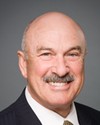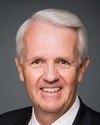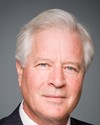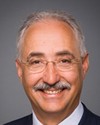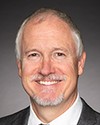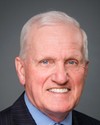moved that Bill C-49, An Act to amend the Museums Act in order to establish the Canadian Museum of History and to make consequential amendments to other Acts, be read the second time and referred to a committee.
Mr. Speaker, I am very pleased to open the debate in the House on Bill C-49, an act to amend the Museums Act to establish the Canadian museum of history.
This legislation would change the name and mandate of the Canadian Museum of Civilization, an institution with a remarkable and proud history. It is a history that traces its way back to 1856 when it was then known as the Geological Survey of Canada. In 1968, its mandate shifted and its name changed again to the Museum of Man. In 1986, it was renamed the Canadian Museum of Civilization and was moved to its current home on the bank of the Ottawa River.
This museum is the largest of Canada's museums. It is the largest both in size, with over one million square feet, and visitors, averaging 1.3 million visitors over the past couple of years. It receives the largest share of government funding of any museum and it is one of the museums with the highest level of self-generated revenue.
While the Canadian Museum of Civilization is our country's most visible national museum, it is not our only museum. In fact, there are over 2,500 museums in communities all across the country, some large, some small, and all these museums tell our stories. They tell them in different ways and in different locations and they tell them in a way that is unique to these local communities.
For example, in the small town of Midway, British Columbia, there is an exhaustive display of material from the Japanese internment during the Second World War. Japanese Canadians living in the region collected materials and put together a narrative of what Japanese Canadians dealt with and suffered through in the south Okanagan during the Second World War. There are countless examples of exhibits like this in museums all across Canada.
This museum describes Canada's history, yet Canada does not have a national institution that connects all of these local museums across the country to tell Canada’s story.
Geographically, Canada is the second largest country in the world, but in terms of population, we are the 34th largest country in the world. Therefore, what unites us together as Canadians? What unites us as a people? It is our languages, our culture, the arts and the ability to tell our stories one to another and to have an understanding of our shared history. A museum devoted to our history will provide a focus on the people, the places and the achievements that bring us together as Canadians.
We are counting down to Canada’s 150th birthday in 2017. The road to Canada’s 150th birthday offers us an unprecedented opportunity to celebrate our history and the achievements that define who we are as Canadians.
Our stories are vast, and they deserve to be told. From Samuel de Champlain’s arrival on our shores to the last spike that marked the completion of the Canadian Pacific Railway tracks that took us from east to west and back.
From Terry Fox's journey in the Marathon of Hope that still inspires millions of Canadians today to raise money and fight cancer to Maurice “Rocket” Richard to James Naismith and his invention of basketball to our brilliant scientists like Frederick Banting and Charles Best, these are the people, the events, the stories that inspire us always and need to be told and retold again.
Canada needs and deserves a national institution that will tell the stories of Canada. Canada needs an institution that will independently research and explore Canada's history. Canada needs a national institution that celebrates our achievements and what we have accomplished together as Canadians. Our children need to know more about Canada's past. That is why last year our government announced the creation of the Canadian museum of history.
Let me read the mandate that we are proposing in Bill C-49 that is at the heart of this debate and of this legislation. This is what the new mandate of the museum will read:
The purpose of the Canadian Museum of History is to enhance Canadians’ knowledge, understanding and appreciation of events, experiences, people and objects that reflect and have shaped Canada’s history and identity, and also to enhance their awareness of world history and cultures.
We have chosen not to build a new national museum from the ground up. We are doing that right now in Winnipeg with the Canadian Museum for Human Rights. We have also established the Canadian Museum of Immigration at Pier 21 in Halifax, building on an existing institution.
The home of this new museum will be what is currently the Canadian Museum of Civilization.
We will build on its reputation and popularity to create a museum that will showcase our achievements as a nation.
The United States has the Smithsonian. Germany has the German History Museum.
Let me share with the House something I think is really important to understand about the details of what we are proposing here with this new museum.
Beginning shortly, the museum will renovate over 50,000 square feet of public space, roughly half of the permanent and temporary galleries that are currently part of the museum. Those areas of the museum that will remain as they are include the very popular Canadian Children's Museum, the First Peoples Hall and the IMAX theatre. A $25-million one-time investment will allow the museum to make this happen.
It should be noted that the current Museum of Civilization in Gatineau has not been updated in over 20 years. In fact, in the Canada Hall at the museum, aboriginal people are excluded from the narrative that is Canada's history. It is a museum that needs to be updated and needs to be improved upon, and that is what we are proposing.
The museum will also allocate internal resources to the project and will launch a fundraising campaign with the intent to raise $5 million. I am told that the fundraising campaign is already well under way and having success. This investment will be funded within existing budgets from the Department of Canadian Heritage at no new additional cost to taxpayers. It will allow the Canadian Museum of Civilization to begin the transformation that will be completed in time for Canada's 150th birthday in 2017.
More than changing the name, the mandate and the exhibits, more will change. We want to ensure this great national institution, which we have the benefit of visiting in Ottawa, reaches out across the country and connects Canadians. To achieve this, we are building partnerships, partnerships that will be created between the new Canadian museum of history and museums across Canada that have the same mandate, but are doing it at a local level. These local museums will have the opportunity to become official partners of this new great national museum.
In fact, we already signed our first memorandum of understanding with the Royal B.C. Museum in Victoria. What this will mean for that museum and other museums across the country is they will have access to the 3,500,000 items currently in the collection at the Canadian Museum of Civilization, soon to be the museum of history. Approximately 90% of these items are currently sitting in storage because we do not have a network to moves these items across the country and share our history. This is a really important move forward to tell our history and allow us to tell our stories to all Canadians.
I am also very pleased to say that since we announced this project, it has received broad-based support from Canadians, including countless historians and people in historical associations from every corner of the country. These are not people, by the way, who frequently agree with our government, but they agree with the need to create a national infrastructure for the teaching of Canada's history.
I am grateful, for example, of the support of Douglas Cardinal, the original architect of the Canadian Museum of Civilization and a very well-known Canadian for all of his life's accomplishments. In response to the creation of this museum, he said, “I love the fact that the museum keeps evolving and growing, and people still feel that it’s a national monument that can expand and serve all of Canada”.
This project has the support of and has been celebrated by Canadian historians as well. It includes the award-winning historian and author, Michael Bliss, who said that it was very exciting that Canada’s major museum would now be explicitly focused on Canada’s history and he thanked the government for making the museum possible.
Jack Granatstein, who, as many in the House know, wrote the book Who Killed Canadian History? a few years ago said, “This move (to create the Canadian Museum of National History) is exactly what I thought should happen. I'm delighted the government and the museum are doing it”.
Deborah Morrison of Canada's National History Society said, “the potential for the new Museum to help create a national framework for our history is compelling. And the time is right”.
John McAvity of the Canadian Museums Association said, “the renaming of the museum is essential, that it is good news and that it will give Canadians greater access to their heritage and history”.
The Historica-Dominion Institute said, “We enthusiastically welcome the creation of this new Canadian museum of history”.
The Ontario Museum Association said, “We welcome the initiative to strengthen partnerships among museums in Ontario and across the country”.
John English, a former Liberal member of Parliament and a biographer of P.E. Trudeau, said, “Congratulations on the Canadian museum of history”.
That is a great boost for the museum.
From Marie Senécal-Tremblay, of the Canadian Federation of Friends of Museums, representing volunteers from smaller museums across Canada: “We support these changes to one of our country's most important national museums.”
I am also very pleased, and I should highlight this as well, that the museum proposal does have the support of the mayors of Gatineau and Ottawa, Marc Bureau and Jim Watson. They both support this initiative as being important to the national capital region.
As well, many historians have added their names to the list of those who support this initiative: Réal Bélanger, Charlotte Gray, Anne Trépanier, Norm Christie, Yves Frenette, Bob Plamondon, Richard Gwyn, Jane Fullerton, Suzanne Sauvage, Brian Lee Crowley and many more. Again, people who may not be Conservative understand that on items like this we should work together, put partisanship aside and support the creation of institutions that bind this country together.
I think the Toronto Star said it very well in their editorial on this subject, and I quote:
It was welcome to hear [the government] announce...the rebranding of the Canadian Museum of Civilization...as the Canadian Museum of History. Canada's history should be celebrated in [this] revamped museum. ...we want to make history come alive, ensure we don't forget our shared past and [that we] honour our heroes.
In conclusion, I understand that this is an issue that has brought some great debate across the country. However, Canada's history is far from dead. It is alive and well and a story that needs to be told.
It is a true statistic, but a sad one, that in only four of Canada's 13 provinces and territories is it necessary for a child to take a history class to graduate from high school. That is provincial jurisdiction, of course, but it does not mean we should step away from the importance of it as a national government, as a national Parliament. We can work together and do what we can to talk about Canada's history and improve education, by supporting our museums, building a great national museum, uniting all of our museums and working together on this project.
In the past, this Parliament has come together. When a former Liberal government decided to create the Canadian War Museum, people said it was divisive, a waste of money and that we ought not do it now. However, the Liberal government had a vision and said it was the right thing to do. The War Museum is now one of the best museums in the world, rivaled only by Les Invalides in Paris and the Imperial War Museum in London. It is one of the great museums in the world.
We are now asking for what this Parliament has done before when it unanimously supported the creation of the Canadian Museum for Human Rights in Winnipeg. We were working together, and it is going to be a great institution for all of Canada. This Parliament also unanimously supported the creation of the Canadian Museum for Immigration at Pier 21, in Halifax. It is a great institution and doing good things for this country.
I have approached this in as non-partisan a way as I can. I have reached out to my opposition colleagues in the NDP and the Liberal Party, provided them with the text of this legislation and tried to work with them so we can make sure this museum will go forward and be a constructive piece of Canada's social fabric. We have worked together in the past on institutions. This is a good project for this country, and I hope my colleagues will work with us to make it happen.
A couple of years away is Canada's 150th birthday. We deserve to have a great national institution that will teach Canada's history, bring Canadians together and work toward a celebrated goal of keeping this country united and strong. Support this bill.






















